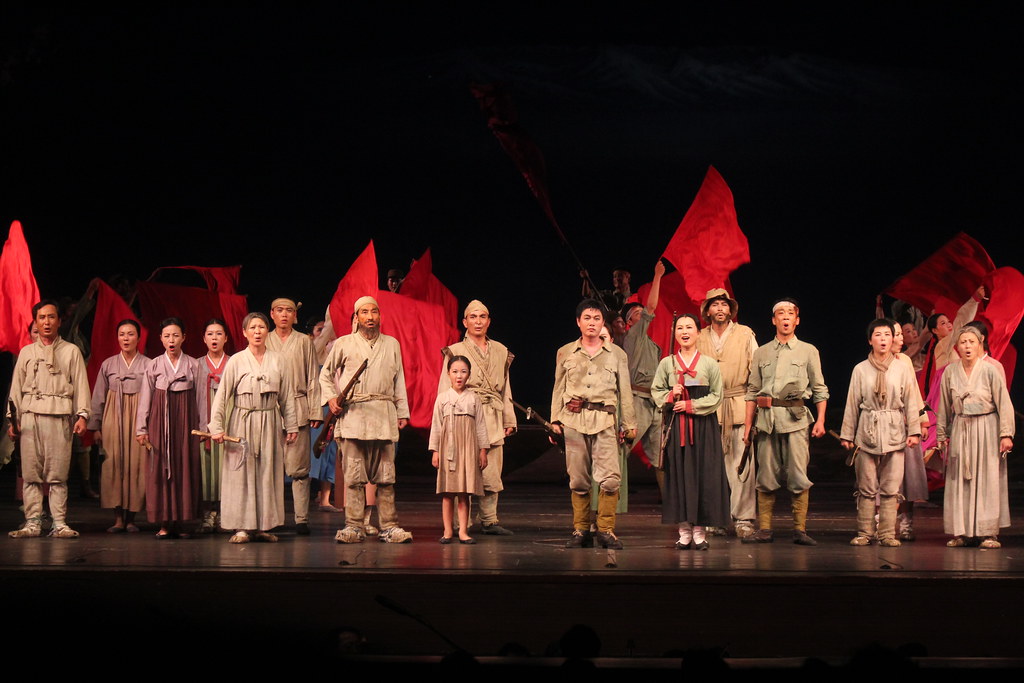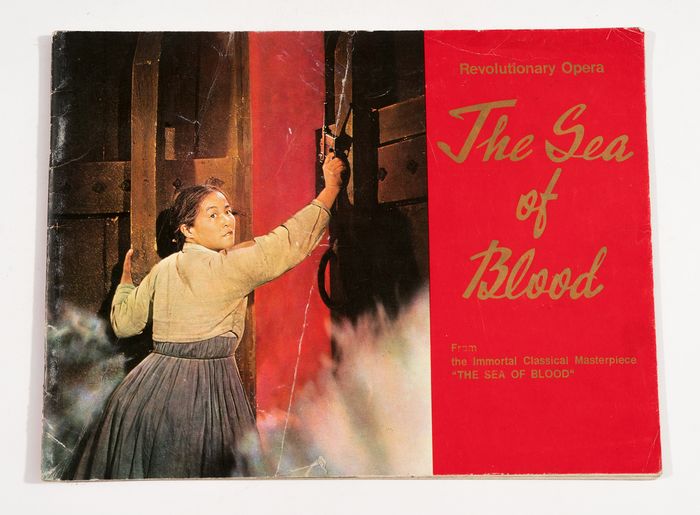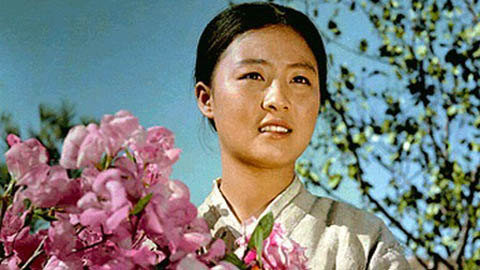Taking its cues from Chinese Cultural Revolution period operas, North Korean revolutionary operas still see regular performances to this day. During the Pyongyang Language Study Tour, our group was able to watch a new show that recreated famous scenes from the five most famous North Korean operas. Usually held in the Pyongyang Grand Theater, some of these shows have been performed over a thousand times. Here’s the list in my own personal order.
5. The Song of Mt Kumgang
Mt Kumgang holds a special significance to North and South Koreans as not only is it one of the peninsula’s most famous mountains it is also located just on the Northern side of the border and has hosted family reunions between Koreans separated by the DMZ after the Korean War. This opera tells the story, however of a family separated during the Japanese occupation of Korea and their reunion afterwards.
4. Tell o’ the Forest
A typical tear-jerker, this Revolutionary Opera tells the story of a Korean villager who pretends to serve the Japanese in order to gain their trust and eventually betray them in order to assist the anti-Japanese struggle. Sadly his compatriots are also entirely deceived by his performance, causing his daughter to kill herself in shame. In the end, he springs his trap on the Japanese and is himself killed during his ambush
3. A True Daughter of the Party
For a change of pace, this opera is set during the Korean war and features a young nurse who is inspired by the fighters who risk their lives in the fight with south Korea and the American forces. She joins the Worker’s party and dedicates herself to saving as many injured soldiers as she can. While undertaking this task, she goes through many personal hardships and faces countless challenges. Eventually, she makes the ultimate sacrifice and gives her own life shielding a wounded soldier with her body. There has also been a film adaptation of this opera.
2. The Sea of Blood
This was the first Revolutionary Opera in North Korea and made its debut in July 1971. Considered the quintessential example of North Korean opera, it set the tone for future operas in the DPRK. There has also been a film adaptation and a novelization.
The Opera shows the story of a Korean mother and her family and the brutality they suffer in Japanese occupied Manchuria. Eventually, they join the anti-Japanese revolutionaries, and the story ends with victory over the Japanese. Sea of Blood comes from a quotation on the Opera about the Japanese turning Korea into a “Sea of Blood.”
1. The Flower Girl
Another anti-Japanese revolutionary operas set in the 1930s, the flower girl was first performed in November 1972. A film adaptation was also made and is widely considered the most successful North Korean film of all time, winning an award at the Karlovy Vary International Film Festival in Czechoslovakia. The Flower Girl Opera and film also proved wildly popular in China, and many older Chinese still remember it fondly.
The Opera tells the story of a young girl who picks and sells flowers to care for her widowed and sick mother and her blind sister. While facing terrible harassment and worse from their Japanese landlord and his thuggish lackeys. Eventually, the girl’s brother returns and United the villagers to overthrow the landlord, and thus like Sea of Blood, reinforcing themes of patriotism and Juche (self-reliance) and the power of unity. The Flower Girl has been performed in over 40 countries.
If you’re asking yourself, can I see a Revolutionary Opera in North Korea? The answer is maybe, if there is a show scheduled you may be able to visit, tickets are usually only 20 euro which is a bargain really! Contact us if you’d like to see a North Korean Opera with your own eyes!










